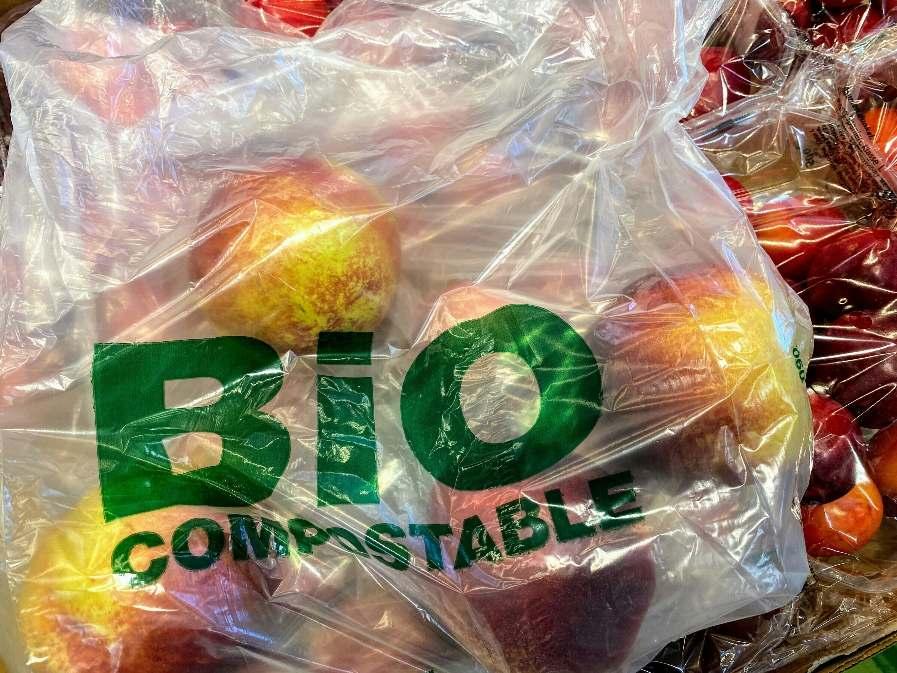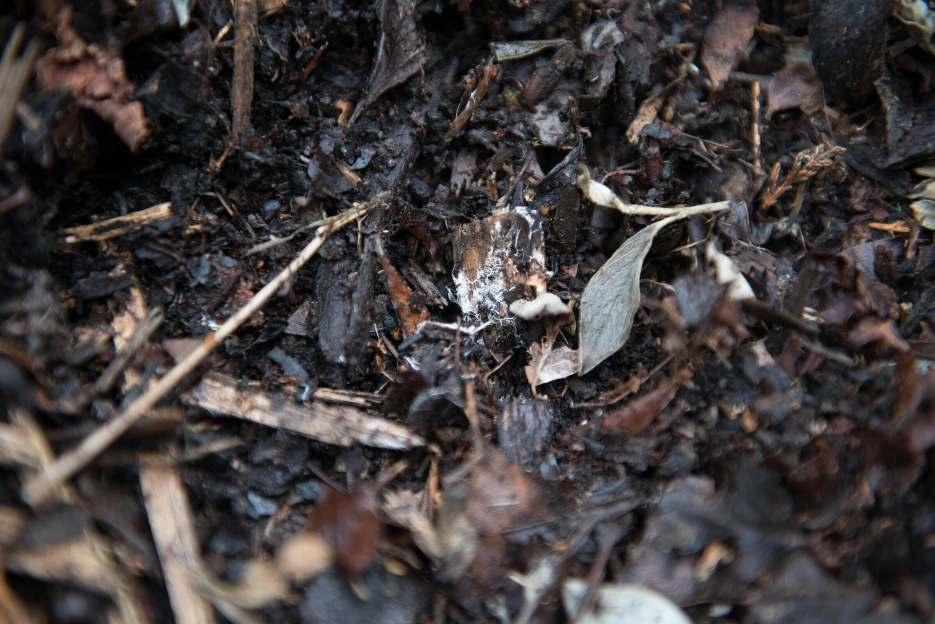

What is Anaerobic Decay?
The Meaning of Anaerobic Decay & How to Avoid it During Composting



What is Anaerobic Decay?
Organic decay is the process of organic matter breaking down over time It is a natural process that occurs in nature and is essential for the cycle of life Organic decay is the result of bacteria, fungi, and other microorganisms breaking down organic material into simpler compounds . This process is also known as decomposition .

Anaerobic decay occurs when organic compounds break down by living organisms that do not require oxygen . The resulting substances include methane �CH4 �, organic acids and hydrogen sulfide , many of which have disagreeable odors . The decomposition is accompanied by the release of small amounts of carbon dioxide �C02 �.
Anaerobic decay
is a type of organic decay that occurs in the absence of oxygen . This type of decay is usually caused by the presence of microorganisms that produce enzymes capable of breaking down organic matter without the need for oxygen . This type of decay is most commonly found in wet, low- oxygen environments such as lakes , rivers , and wetlands .
Anaerobic decay is a process that takes place in soils and ecosystems that starts with the breakdown of organic material by microorganisms and fungi.
This process results in the release of harmful gases , like hydrogen sulphide , that can kill plants . Anaerobic decay is a major cause of soil erosion and the loss of biodiversity.

What is Anaerobic Decay?

Aerobic Decay

What is Anaerobic Decay?
Aerobic decay, on the other hand , is decomposition with adequate oxygen present throughout the decomposing material
Aerobic decay can occur in pits , bins , stacks or piles if adequate oxygen is provided . It is important to add oxygen regularly by turning the compost at intervals or by other techniques . It also releases heat. The amount of heat released depends on the amount of oxygen present and how well it is able to penetrate the material. The less oxygen there is the longer the process will take and the less heat will be generated .



What is Anaerobic Decay?

What Causes Anaerobic Decay to Occur

What is Anaerobic Decay?
The term Anaerobic decay refers to the process by which organic material breaks down without the help of oxygen .
Anaerobic decay typically occurs in the complete absence of oxygen , in which anaerobic bacteria convert organic material into gases and resulting heat This process can lead to the emission of harmful gases , including carbon dioxide and methane , which can contribute to climate change .



What is Anaerobic Decay?

How can anaerobic decay be used to produce fuel?

Anaerobic decay can be used to produce fuel in the form of biogas
Biogas is a mixture of methane , carbon dioxide , and other gases . This biogas can be harvested from anaerobic decay tanks (biogas digesters ) and then used to generate electricity.
Anaerobic decay of organic matter produce useful energy sources methane and bio - oil It occurs when organic material does not receive oxygen to break down and produce energy

In anaerobic conditions , the microbes use up the available oxygen and produce methane and other gases .


What is Anaerobic Decay?
A useful end product of anaerobic decay in waste materials
The byproducts of anaerobic decay in waste organic materials can be used to create products that are environmentally friendly and useful. One such product is methane gas , which can be used for energy production or as a propellant in gas tanks .
A useful end product of anaerobic decay is compost. Compost is a natural fertilizer that is produced through anaerobic decay. Compost is rich in nutrients and can be used to fertilize gardens , farms , and other agricultural areas .
What is Anaerobic Decay?
Why is anaerobic decay bad for compost?
Anaerobic decay is bad for compost because it produces harmful greenhouse gases and a bad odour Anaerobic decay of organic matter produces methane , carbon dioxide , and water vapour is the most harmful gas because it is over 35 times more potent than carbon dioxide over a 100- year period

When anaerobic decay occurs , it produces odours and toxic chemicals that can be harmful to plants and animals . The presence of these odours and chemicals can prevent the compost from being effective .

What is Anaerobic Decay?
Methane

Anaerobic Decay



Anaerobic decay is a process that occurs when bacteria and fungi break down dead matter without oxygen . This can happen naturally in soils , marshes and lakes .
Anaerobic digestion facilities generate renewable energy that helps reduce reliance on fossil fuels and greenhouse gas emissions Additionally, byproducts can be applied to the soil as nutrient- rich fertilizer.

What is Anaerobic Decay?

How to Prevent Anaerobic Decay in Compost

What is Anaerobic Decay?
Anaerobic decay in compost piles can lead to numerous problems , including foul odours , reduced decomposition rates , and the production of harmful compounds




Understanding Anaerobic vs. Aerobic Decomposition

What is Anaerobic Decay?

Composting is fundamentally a biological process where microorganisms break down organic matter While both aerobic and anaerobic decomposition can occur naturally, aerobic decomposition is generally preferred for composting due to its faster rate , higher temperatures , and more complete breakdown of organic materials
Aerobic decomposition requires :
Oxygen levels above 5 % throughout the pile
Proper moisture content �40 60%�
Appropriate carbon - to - nitrogen ratio �25 � 1 to 30� 1 �
Adequate porosity for air movement

Key Strategies for Preventing Anaerobic Conditions


1. Optimal Particle Size Distribution
Maintaining proper particle size distribution is crucial for creating adequate pore space within the compost pile . Research indicates that a mix of particle sizes between 1 / 2 inch to 2 inches �1 . 3 5 .1 cm) provides optimal air space while maintaining sufficient surface area for microbial activity
2. Moisture Management
Water content must be carefully controlled to prevent anaerobic conditions :
Maintain moisture levels between 40� 60%
Use the squeeze test: material should feel like a wrung- out sponge
Monitor rainfall and cover piles during heavy precipitation
Ensure adequate drainage at the base of the pile
3. Proper Aeration Techniques
What is Anaerobic Decay?
Regular aeration is essential for maintaining oxygen levels :
Turn piles every 3 7 days during active composting
Use perforated pipes or aeration systems for passive airflow
Monitor internal temperature as an indicator of aerobic activity

Maintain pile height between 4 6 feet �1 . 2 1 . 8 m) to prevent compression
4. Structural Amendments
Adding bulking agents can improve air circulation :
Wood chips (recommended size : 1 2 inches )
Straw or hay (chopped to 4 6 inches )
Corn stalks or similar rigid materials
Maintain 30 35 % bulking agent by volume

What is Anaerobic Decay?

Monitoring and Troubleshooting

Key Indicators of Anaerobic Conditions:
�� Odor characteristics :
Rotten egg smell (hydrogen sulfide )
Putrid or sour odors
Ammonia- like smells
�� Physical characteristics :
Wet, matted materials
Dark , slimy texture
Cold or cool internal temperatures
Corrective Actions
When anaerobic conditions are detected :
�� Immediately turn the pile to incorporate oxygen
�� Add dry, carbon - rich bulking materials
�� Reduce pile size if compression is evident
�� Install additional aeration mechanisms if needed

Preventing anaerobic decay requires careful attention to pile construction , monitoring , and maintenance . By maintaining proper moisture levels , particle size distribution , and aeration , composters can ensure efficient aerobic decomposition and produce high - quality compost.

What is Anaerobic Decay?

Putrefactive Anaerobic Decay

What is Anaerobic Decay?
Anaerobic decay is the breakdown of organic compounds without oxygen It occurs when organisms that can live without air, such as yeasts and bacteria, break down the compounds to organic acids and methane �CH4 �.
These organisms also release large amounts of energy, primarily in the form of heat. This is a great advantage over aerobic decomposition , which uses oxygen to produce energy.
The process of putrefactive decay can speed up or slow down based on the factors listed below:
Environmental temperature and moisture . Temperatures between 21 degrees C and 38 degrees C promote the chemical breakdown of tissue , while high humidity levels aid in growth of microorganisms

What is Anaerobic Decay?
Bodies within deep graves tend decompose more slowly than bodies shallow graves . This is because can help retain body temperature moisture , slowing the bacterial breakdown of tissues . Some pathogenic bacteria are capable of utilizing a variety of putrefaction pathways , which lead to the production of certain metabolites like ammonia, cadaverine , cresol, indole , phenol and H2S. These pathways are facilitated by genes that encode for the and other cellular components involved in the process . putrefactive enzymes


Microorganisms

What is Anaerobic Decay?
Microorganisms are a group of tiny living organisms that can be bacteria, , fungi, protozoa, algae , and viruses . These microscopic organisms are essential for life on Earth . archaea
Fungi, for example , are microorganisms that make dead things decay and rot. They include mushrooms and moulds , as well as yeasts that make bread .
Algae are microscopic organisms that produce energy through photosynthesis , similar to plants . They are very important for pumping oxygen into the atmosphere , but they can also cause harm.


In contrast, bacteria do not require oxygen to live . They use a complex system of molecules to turn organic waste into nutrients .

What is Anaerobic Decay?
Bacteria are an essential part of the composting process , contributing to the breakdown of organic matter and decomposing it into a range of different products . The rate of decomposition is determined by the temperature , moisture and chemical composition of the organic material.

Physical Decomposers

What is Anaerobic Decay?
Besides bacteria and fungi, there are other organisms that break down organic matter into smaller parts These are called decomposers These include earthworms , which live in the soil and break down waste into organic material
These decomposers can also help nutrients in the environment They dead plants and animals into chemical nutrients such as carbon and nitrogen are released back into the soil, air water as food for living plants and animals



What is Anaerobic Decay?
They can also play a role in bioremediation , which is the use of natural living things to clean up polluted soil or water in a more environmentally friendly way. For example , engineers can use earthworms to break down toxic oil spills in the ocean or sewage in a city into harmless byproducts that do not harm the environment or humans .
However, not all decomposers are beneficial to the environment. Some microbes are not able to thrive under certain conditions , such as too much light or too much moisture .




In conclusion , anaerobic decay is an essential part of the cycle of life and can be used to produce fuel and beneficial compost.
However, it can also produce odours and toxins that can be harmful to the environment
It is important to be aware of the potential risks associated with anaerobic decay and to take proper precautions when dealing with it.

What is Anaerobic Decay?

About Us
IPPTS Associates is the UK based consultancy run by a Chartered Waste Manager with over 30 years of experience in the waste management industry.
He offers a waste management consultancy service through IPPTS Associates and has worked on projects around the world .
He is passionate about educating the public about waste management and promoting sustainable practices .



